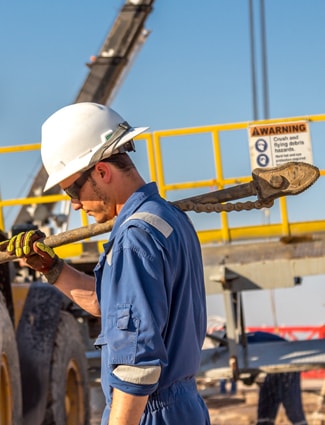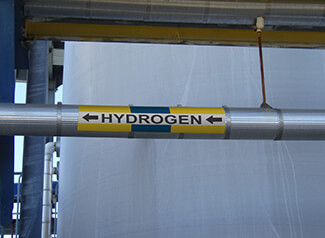10 Safety Tips for Oil and Gas Industry Workers

Workers in the oil and gas extraction industry continue to be one of the highest at risk of injuries and fatalities on the job compared to all other industries in the United States. The most recent data from the Bureau of Labor Statistics (2015) revealed that out of 120 workplace deaths in the mining, oil and gas extraction industry, 74 of them occurred within the support activities for oil and gas operations (NAICS 213112).
The constant pressure of efficient productivity due to the high cost of drilling projects, time away from home, long work days, and high physical demands takes a hefty toll on workers. These factors can ultimately affect worker safety by causing an increase in human error including misuse of equipment and inconsistent procedures that can lead to higher chance of accidents.
Improving Safety for Oil and Gas Workers
This reinforces the importance of the re-evaluation of safety programs and behavior to more effectively address worker safety issues and reduce the rate of injuries and accidents in the industry. Apply these tips to improve worker safety on your next project:
1. Collaborate with the Local Emergency Response Community
Develop a relationship with local emergency response organizations and establish a consistent flow of communication to provide a higher level of overall safety. Emergency responders, rig hands, and exploration company safety and health professionals must work together to utilize their resources to be ready to handle emergencies swiftly and successfully. Discuss specific health and safety hazards that exist at the drilling location and determine how to best assist each other in these emergencies. If possible, take emergency responders on a tour of the drilling site or rig to give them a clearer idea of how to approach potential emergencies.
2. Invest in a Safety Program that Unites Workers
Encourage an environment of open communication and respect. Embrace a personal approach to safety training and dedicate time to allow workers to get to know each other. Building more substantial personal connections with fellow workers will inherently build trust and comradery when out in the field to improve overall safety.
3. Actively Monitor Mental Health of Workers

A large factor that negatively affects safety in the industry is worker culture. Eliminate the age-old "tough guy" exterior and stereotype that is typically associated with workers in the industry by promoting a transparent and open environment through various training techniques and team exercises. Building a sense of community and trust with workers will make it easier for them to be more willing to ask for help, obey rules, admit mistakes, and seek advice making for a more positive and safe environment.
Research conducted on mobile workers in the Alberta Oil Sands in 2014 revealed masculine work cultures, or what it means to be a "man" in these environments, caused men to internalize their feeling of exhaustion, stress, and more, leaving their physical and mental health hanging on by a thread until it's too late.
4. Ensure Familiarity with Worksites
Before work begins, ensure everyone who will be conducting work understands their role, hazards that exist, and all safety precautions. Require procedures and hazards to be fully communicated to new workers in the event of shift handovers and work site changes.
5. Consistent Housekeeping
Reduce the chances of fatal accidents by keeping floors, pathways, and all work areas clear of unnecessary items to prevent trips and falls and struck-by hazards. Implement clear signage that directs workers to emergency and safety equipment to quickly combat hazards. E.g.: equip all problem areas with spill kits in the event a chemical or oil spill occurs.
6. Implement a 5S System
Improve the workflow and reduce waste with a 5S system. Apply strategic labeling techniques to direct, warn, and communicate a variety of different information to workers. Color-code materials in the workplace to make them easier and quicker to find including specific tools, equipment, and more.
7. Install an In-Vehicle Monitoring System (IVMS)
Accidents from driving or riding in a motor vehicle account for the highest number of total fatalities in the oil and gas industry. Monitor driver behavior to analyze issues and poor habits to determine how to improve your vehicle safety programs and worker training.

8. Provide Clear Visual Communication
Strive to eliminate miscommunication and confusion with legible and reliable signs and labels to convey dangers and safety instructions. Create custom signs to communicate procedures specific to certain work crews and work sites. Replace worn out, illegible, and outdated signage as soon as possible. Check for faded floor marking that is in need of re-application.
9. Reassess Safety Signage When Projects Shift
When worksites, projects, and crews change, take the time to assess that signs and labels are in the correct areas and communicate present hazards and procedures before the next project begins; this will ensure dangers and details about specific locations will be known when new workers come in.
10. Stay On Top of Machine Maintenance
When working on offshore rigs, the machines are your lifeline when you're hundreds of miles from shore. Prevent premature machine failure and keep your workers safe by conducting regular maintenance checks of machinery. Communicate the importance of regular maintenance checks to your workers using OSHA maintenance activities in their Oil and Gas Well Drilling and Servicing eTool.
Tough and Tested Supplies to Enhance Safety
You need durable supplies to ensure your safety messages can endure grease, grime, and extreme temperatures. Utilize the portable and versatile DuraLabel Toro industrial label and sign printer to print OSHA, ANSI, and NFPA compliant labels for a variety of applications including chemical labeling, pipe marking, arc flash, GHS/HazCom 2012, and more. Toro has the ability to function network-free so it's ready to print wherever you are.
To support your safety programs, it's important to have highly visible floor marking and wayfinding to safely guide workers. Effectively warn, direct, and protect workers from hazards in a variety of different work areas using PathFinder floor marking, wayfinding, and safety tape by Duralabel. You can prevent slips and falls from elevated platforms with a durable grip on slippery surfaces using PathFinder tread tape on floors, handrails, stairs, and wherever extra traction is needed.
With these 10 tips, you can be on your way to create a safer work environment to reduce the likelihood of accidents on your next oil and gas project. Get started with improved communication, safety, and efficiency on your project with our free guide below.
Related Resources

LNG Demand Calls for Effective Safety Solutions
Demand for liquid natural gas is surging. From liquefaction to transport to electricity generation, LNG is a ...
Read
OSHA's Process Safety Management Standard
OSHA established a Process Safety Management (PSM) standard that applies to all companies that use any one of ...
Read
Safety Risk Management
In our experience, those companies who place major significance on risk management are the most successful in ...
Read.png)





